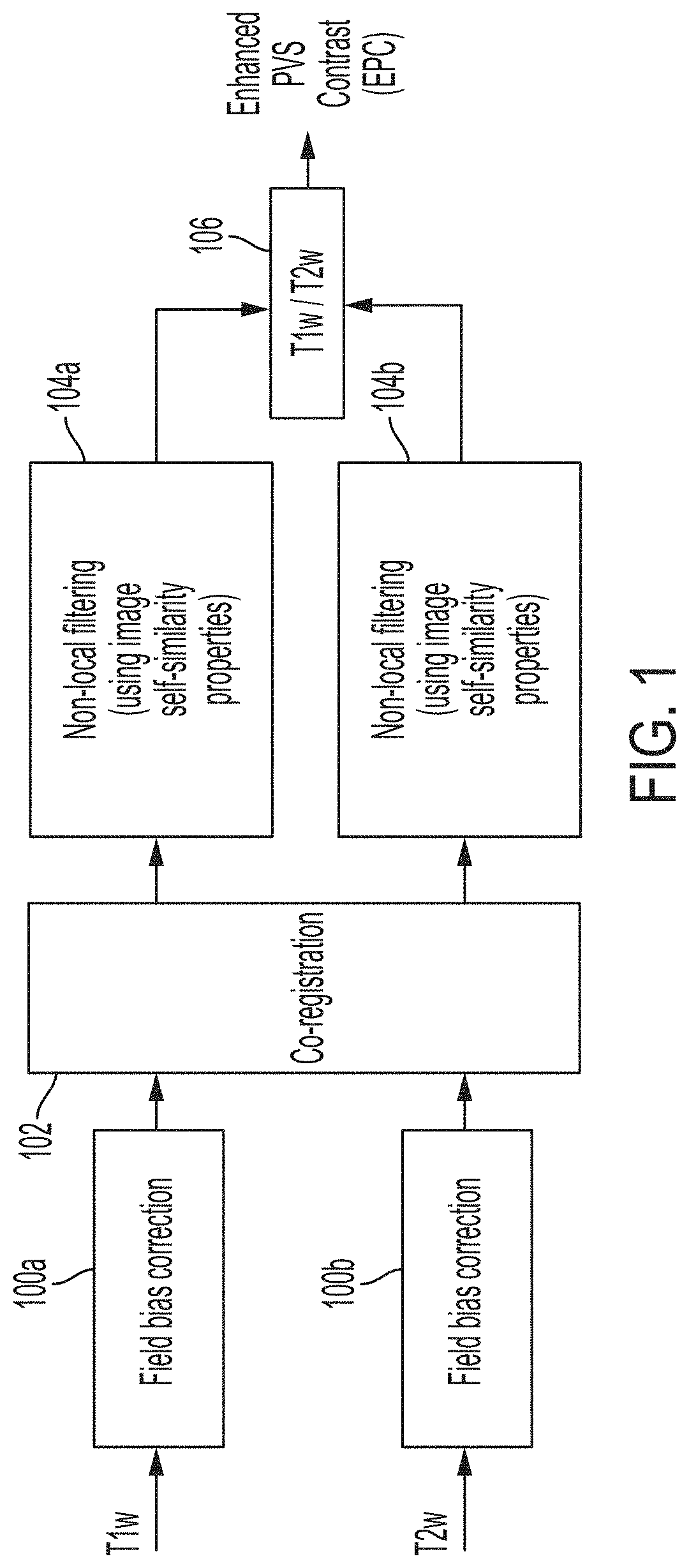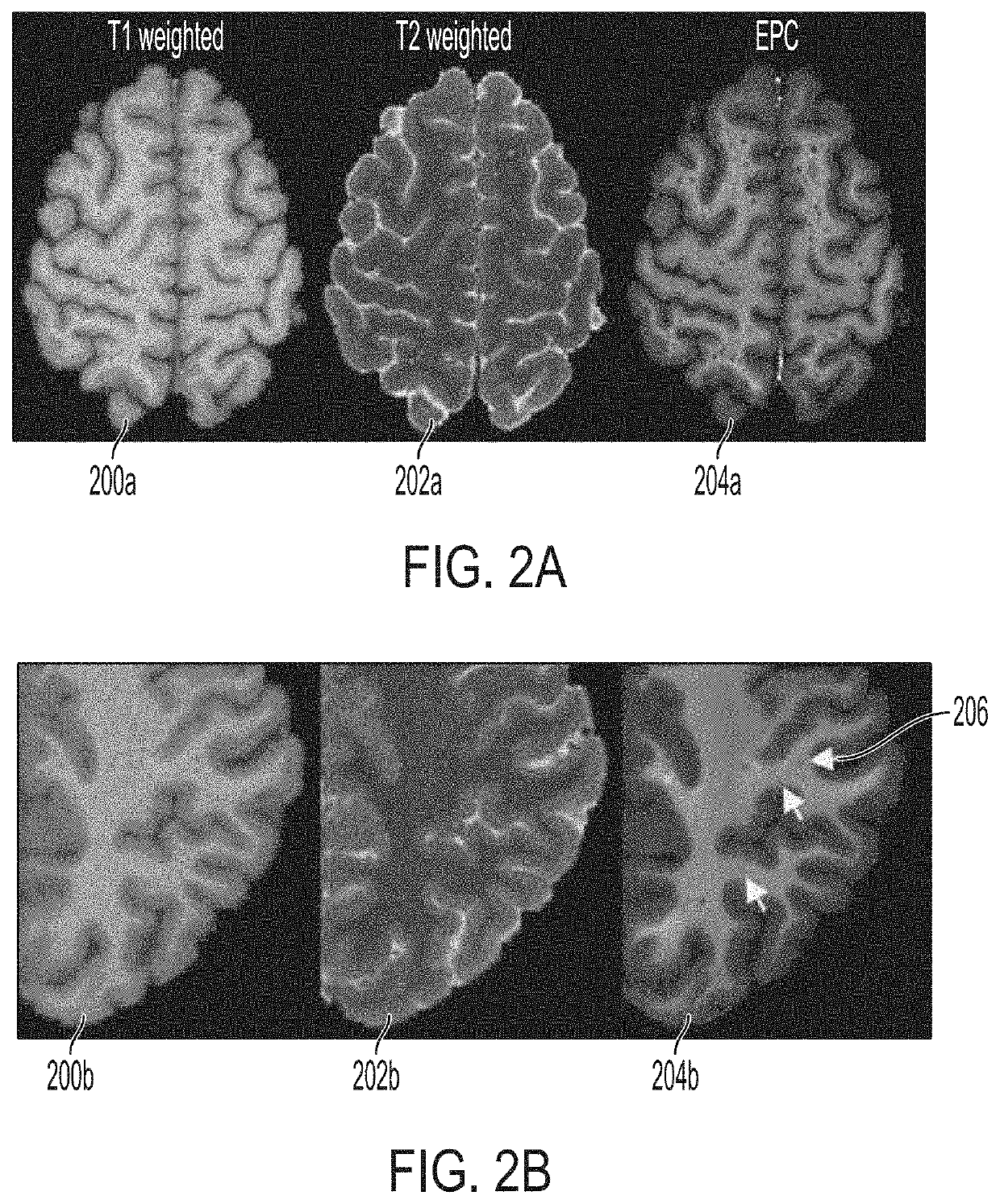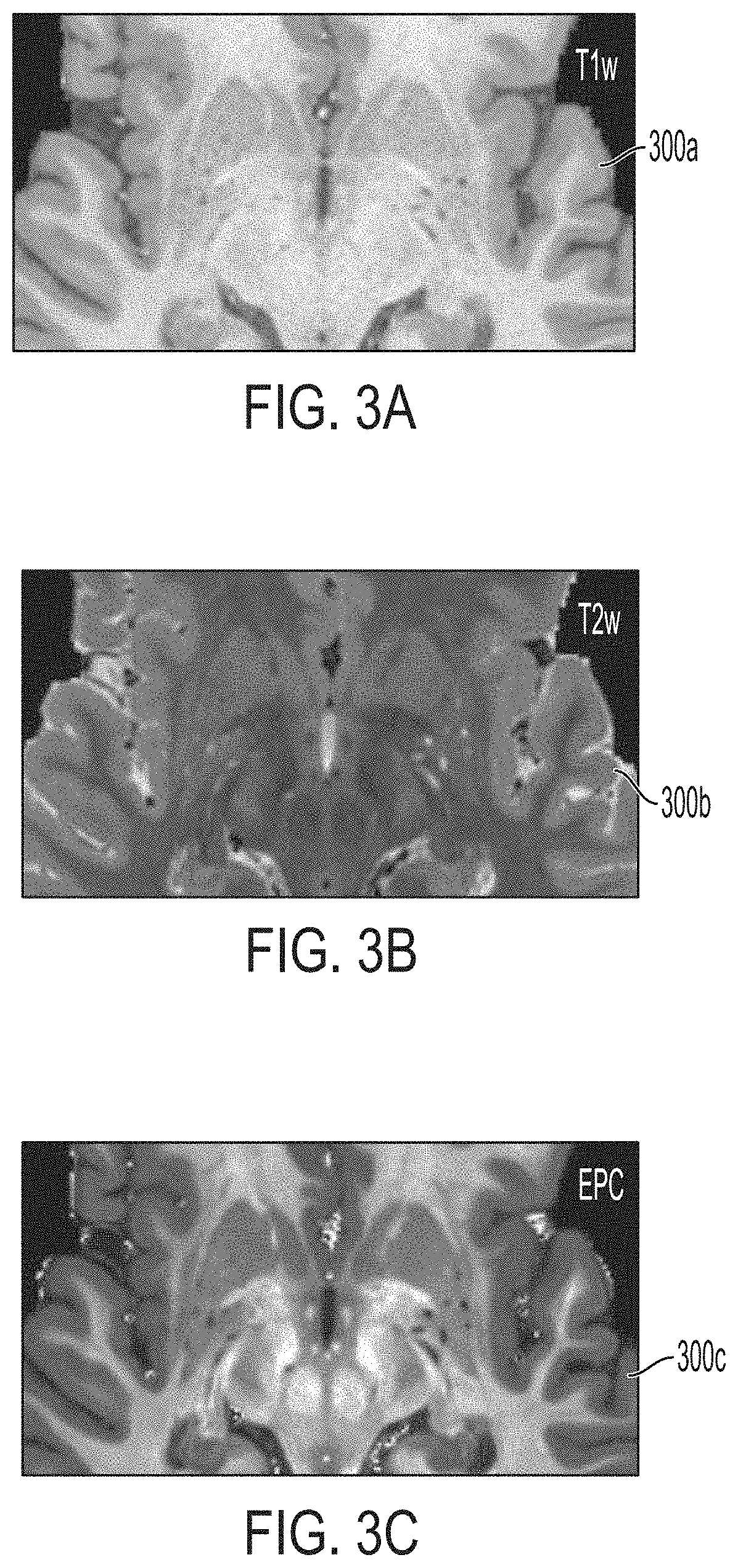Mapping brain perivascular spaces
a brain perivascular space and fully automated technology, applied in the field of brain perivascular space fully automated mapping, can solve the problems of less effort made to enhance the visibility of pvs through postprocessing means, laborious process and prone to errors, and achieve the effect of accurately quantifying pvs in the brain and increasing pvs visibility
- Summary
- Abstract
- Description
- Claims
- Application Information
AI Technical Summary
Benefits of technology
Problems solved by technology
Method used
Image
Examples
Embodiment Construction
[0044]The systems and methods described herein may automatically map brain PVS using MRI scans. The mapping of brain PVS may quantify brain clearance pathways which may be used as a clinical biomarker or a prognosis marker for various neurological diseases and / or may be used to guide neurosurgery. In some embodiments, the systems and methods may include obtaining two images of a brain of a patient having different modalities (e.g., Tw1, Tw2, EPC) and combine the two images to advantageously generate and display 3-D map of the PVS within the brain. The systems and methods may further include advantageously generating and providing to an operator statistics of the brain PVS indicating, correlating with, or relating to a neurological disease condition. Additional image sequences (e.g. FLAIR) may be advantageous to discern PVS from pathological changes (e.g., white matter hyperintensities). Multi-modal approach for PVS quantification may further improve misclassification of vessels. In ...
PUM
 Login to View More
Login to View More Abstract
Description
Claims
Application Information
 Login to View More
Login to View More - R&D
- Intellectual Property
- Life Sciences
- Materials
- Tech Scout
- Unparalleled Data Quality
- Higher Quality Content
- 60% Fewer Hallucinations
Browse by: Latest US Patents, China's latest patents, Technical Efficacy Thesaurus, Application Domain, Technology Topic, Popular Technical Reports.
© 2025 PatSnap. All rights reserved.Legal|Privacy policy|Modern Slavery Act Transparency Statement|Sitemap|About US| Contact US: help@patsnap.com



